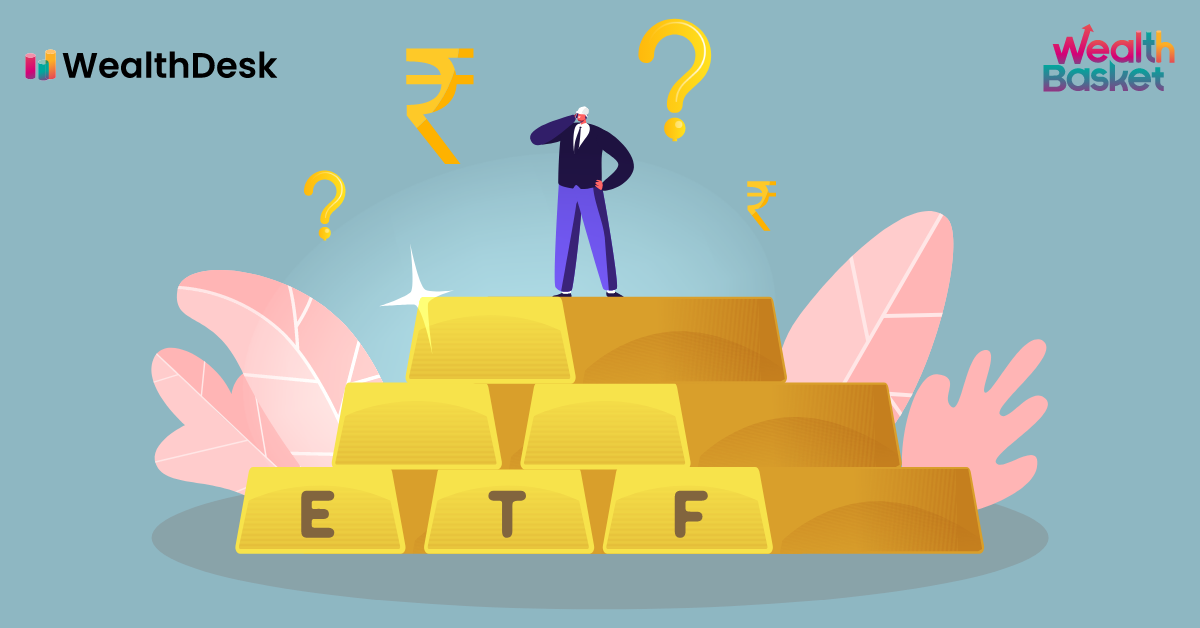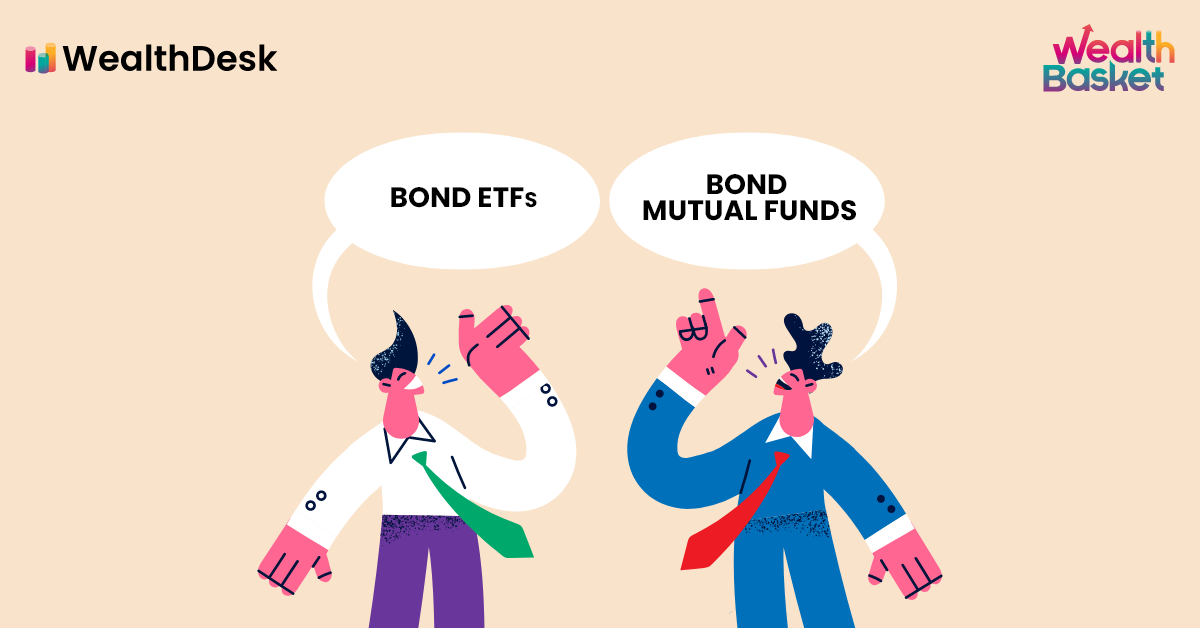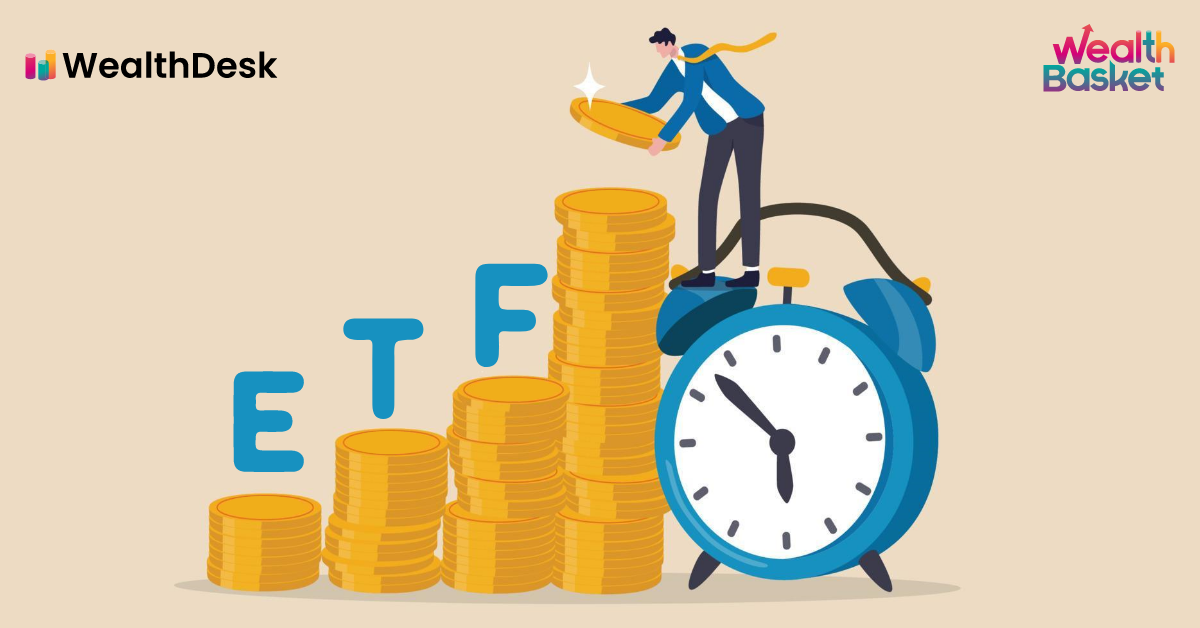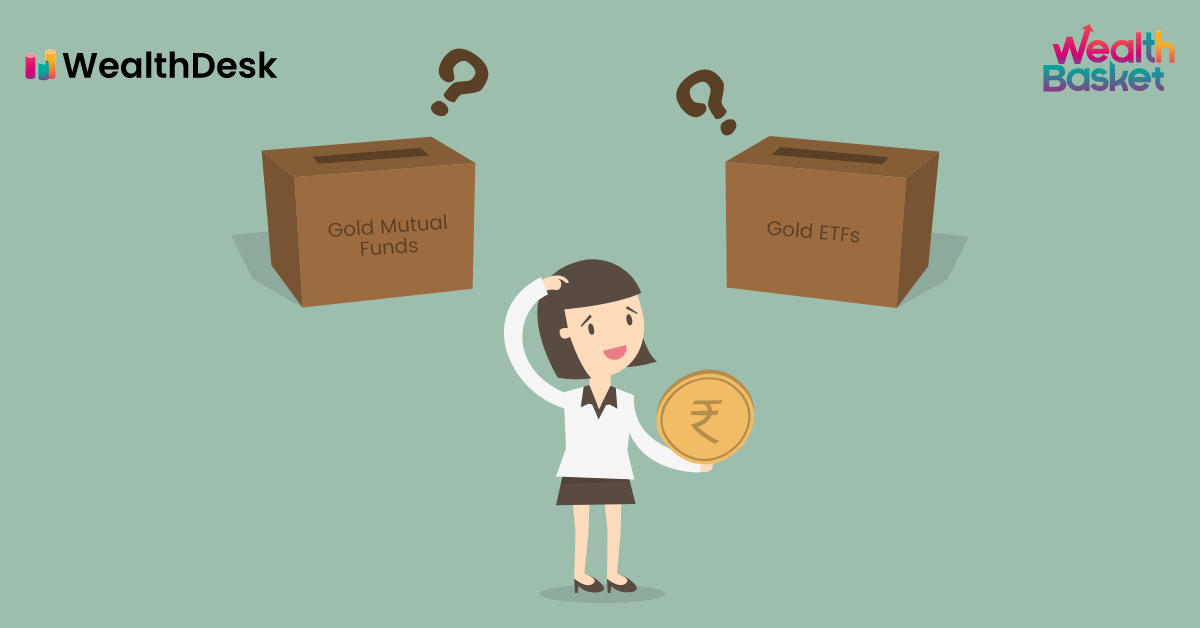In January 2022, gold exchange-traded funds (ETFs) saw the highest-ever repurchase or redemption of ₹ 671 crores due to rising 10-year Indian government bond yields and anticipation of a more aggressive US Fed posture.
While it is true that precious metal is gaining traction when bought electronically, it is also true that they will carry certain risks such as market risk, trade volume restrictions, etc.
This article aims to provide five critical aspects about the gold ETFs you must know before investing in them.
Gold ETF Investment: How Does it Work?
Gold ETFs track the price of gold on the index. One Gold ETF unit is equal to one gram of gold and is highly pure as actual gold backs it. Gold ETFs invest in gold bullion and track domestic gold prices.
Gold ETFs, like stocks, trade on the National Stock Exchange of India (NSE) and the Bombay Stock Exchange Ltd. (BSE). Trading gold ETFs is done through a dematerialized account (Demat) and a broker.
While the price of gold jewelry fluctuates throughout the country, you can trade in gold ETFs at the same price across India. A brokerage fee and modest fund management charges apply when purchasing or selling gold.
Gold ETF Charges
The NSE’s decision to reduce Gold ETF transaction charges in 2010 favors trading members who place proprietary bets.
Suppose you compare the cost of purchasing, holding, selling, and insuring gold in its physical form. In that case, the expenses relating to the acquisition and sale of gold ETFs are lower than other investments. Gold ETF trading typically has a 0.4% commission, and the asset management companies will additionally charge a storage or brokerage fee annually.
Tax on Gold ETFs
Only profits from ETFs held for longer than three years qualify as long-term capital gains. But if you have them for less than three years, they will be dealt with as short-term capital gains.
Second, the tax rate is unfavorable as well. In the case of gold ETFs in India, short-term capital gains tax (gain arising when gold ETFs are sold within three years of their purchase) is levied at an applicable income slab rate, while long-term capital gains (gain arising on ETF’s sale after three years) are taxed at 20% with indexation benefits.
As a result, ETFs in India score lower in terms of returns and tax efficiency, and the tax levy is at 20%+ cess with indexation advantage.
Gold ETF Benefits
Gold ETFs have become increasingly popular because they are easy to trade, and you don’t need to safeguard them for fear of theft. Please continue reading to know their advantages.
Convenient Trading
You can conveniently trade in gold ETFs through your broker on the stock exchange like equities, and the minimum quantity required to buy a gold ETF is only one unit, which equals one gram of gold.
Liquidity
Gold exchange-traded funds trade on stock exchanges and are highly liquid as you can change them into cash at your convenience. They do not have a lock-in period, so you can sell them as soon as you buy them.
Cost-effective
Since there is no entry or exit system, there is no load for buying or selling units in gold ETFs listed on the stock exchange. The expense ratio for gold can be 1% or less, and the brokerage cost can be 0.5% or less.
Real-time Trading
Gold rates are publicly available on the stock exchange. Anyone can quickly check the gold rates for the day or a specific hour before trading in Gold ETFs.
Well-diversified
Your gold ETFs could be an excellent addition to your investment portfolio. During uncertain market conditions, a change in portfolio offers you a far greater return by lowering market risks.
Safe Investment
Gold ETFs are safe investments because SEBI regulates gold ETFs and physical gold of equivalent value backs each unit of gold ETF. Also, gold funds maintain their genuine gold in custody with the gold custodian.
Risks of Investing in Gold ETFs
The general public may resist accepting gold ETFs because sentimental value drives gold demand, which gold ETFs fail to justify. Continue reading to learn more about the risks of investing in Gold ETFs.
Risk of Gold Price Fluctuation
Gold has a track record of exhibiting exponential expansion only when the economy is in turmoil. The metal’s brilliance is inversely related to economic scenarios. When Covid-19 attacked the world, gold reached an all-time high, but it now trades for less than the highs.
Expense Ratio of Gold ETFs
The expense ratio is the costs that AMC imposes, which add to the purchase price of gold ETFs to ensure the fund’s smooth operation. These include record retention, payments to cover personnel salaries, and other general allocated expenses.
Restricted Trade Volumes
The price of a new product is affected by the fact that it is new and not well known and the lack of liquidity in the stock market. Demand and supply logic dictates that if the seller needs financial assistance, they will be ready to sell even at a lower price to meet their needs. This occurs when consumers desire to purchase at a lesser cost, lowering the profit earnings.
Restricted Time for Trading
You can only trade on stock exchanges on five working days between 9:15 a.m. and 3:30 p.m., making it difficult to deal in gold ETFs the same way as actual gold, which is available all year at stores selling, often between 9 a.m. 9 p.m.
Physical Delivery Alternatives – Scarce
Investments containing more than one kilogram of gold are eligible for physical delivery, limiting the product’s attractiveness among the general public compared to the physical form, where quantities transacted might be as low as one gram.
How To Invest in Gold ETFs
Small and new investors can use gold ETFs for diversification because they are transparent vehicles that offer a simple and economical way.
- Open a Demat account and an online trading account to trade stocks, and buy gold ETFs.
- Research to find a gold ETF to suit your investment needs.
- Visit your chosen broker’s trading website and place an order for the gold ETF.
- The orders are sent to the stock market to match with sell orders.
- The brokers execute the order and send you a confirmation on finding a match.
You must have a PAN card and accompanying documentation to open a Demat and trading account to prove your identity and residence.
Alternatively, you can simply pick one of the WealthBaskets carefully created by the SEBI-approved professionals comprising ETFs or stocks reflecting a theme or idea. You just need to visit the WealthDesk page, pick as many WealthBasket you want to buy, fill in the required details, pay a subscription fee, agree to the terms, and you will have investing options like gold ETFs in your portfolio. You will still need to have an active demat account.
Conclusion
It becomes necessary to have a diverse portfolio, and investing in gold ETFs might be an excellent way to do so when done with thorough research and understanding.
The risks of investing in gold ETFs are no less, but the benefits make them worth investing in.
FAQs
Gold Exchange Traded Funds (ETFs) are a superb investment option if purchasing physical gold is challenging for you, or you need to diversifying your portfolio. Gold is comparatively a safe asset, implying that its values are rarely erratic.
Gold ETFs are suitable for investors who want to follow and reflect the current price of gold in real-time. Individuals who do not wish to own the physical commodity but would like to increase their wealth and choose to trade in the precious metal should participate in these ETFs.
In contrast to real gold, gold ETFs are not subject to a wealth tax. Hence, storage (in a Demat account) and safety are not something to worry about, so you can keep your ETFs for as long as possible.


















